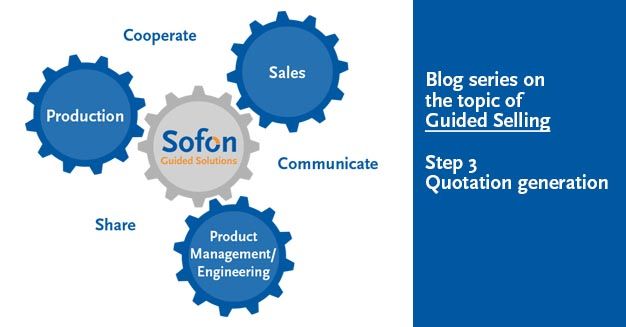SURVIVAL STARTS WITH AWARENESS
Change is not a choice, but a must!
Charles Darwin knew it already two centuries ago: ‘It is not the strongest nor the most intelligent of species that survives. It is the one that is most adaptable to change.’ In his book When Digital Becomes Human, Steven van Belleghem portrays changing customer behavior. And you are adaptable as a company if you show both a digital and a human face.
If your company is unable to respond with customer-specific products, tough. There are plenty of others. That’s just how it is. Brand faithfulness, loyalty? These are outdated concepts; customers go where they feel they are served best. Its now increasingly about self-service and self-control, based on rapidly changing needs. Things are heading this way in B2B too. The customer has experienced how it can work – fast, flexible, proactive – and starts to impose high demands on their contacts with producers and suppliers.
How do you manage these tensions whilst ensuring that the work simply carries on? It’s sensible to approach the adaptation process based on a properly substantiated analysis. Where are you now and what must you do, in response to changing customer behavior, to still be successful in three years’ time?
Such a scan is rooted in awareness at strategic level. That’s where everything starts. What’s our current position and what should we change, in terms of our objectives, to be able to keep pace with the shifting markets? What should we change in concrete terms in relation to our environment? What demands does this place on IT? Where are the obstacles? What will changes yield and what will it cost if we don’t do things? This produces an analysis with solutions, quick wins and associated consequences and investments.
A Health Scan like this can be compared to an X-ray with an initial diagnosis. It can be used to work out a ‘treatment plan’ with further investigations and analyses. An in-depth and inspiring basis for continuing the process of adaptation.
Change is not a choice, but a must. Adapt to survive. Charles Darwin said it two centuries ago. These are inspiring times.
Debate on this subject?This email address is being protected from spambots. You need JavaScript enabled to view it.
Follow our LinkedIn company page to stay informed of all our blogs.
Charles Darwin knew it already two centuries ago: ‘It is not the strongest nor the most intelligent of species that survives. It is the one that is most adaptable to change.’ In his book When Digital Becomes Human, Steven van Belleghem portrays changing customer behavior. And you are adaptable as a company if you show both a digital and a human face.
Digitization as a driver of changing customer behavior
Today’s digital transformation opened up the world to the consumer. We can see it all around us. Customers enjoy the convenience of electronic communication. Requests must be possible 24/7, and a rapid response, within hours, is taken for granted. Customers want complete information in one customer contact and in transparent, understandable language. Essentially, they seek the reassurance that as a company, you understand and identify with them and that you are who they need. Customers do not reason from the point of view of your product, but from their own situation. They want to be guided to the best solution for them.The customer ‘at the helm’
From providers, this requires digital speed and instantly available knowledge of products and applications, all combined with human, empathetic contact.If your company is unable to respond with customer-specific products, tough. There are plenty of others. That’s just how it is. Brand faithfulness, loyalty? These are outdated concepts; customers go where they feel they are served best. Its now increasingly about self-service and self-control, based on rapidly changing needs. Things are heading this way in B2B too. The customer has experienced how it can work – fast, flexible, proactive – and starts to impose high demands on their contacts with producers and suppliers.
Companies as network organizations
The traditional approach to designing, establishing and running companies is no longer current. It doesn’t’ fit the adaptive capacity to survive. Organizations need to be flexible right down to their DNA, tailored to the individual customer. In business model, operational management, processes, systems, product development, collaboration, etc.Impact on the IT landscape
The desired flexibility also has to be reconciled in ICT systems which must be stable and reliable. You can’t just modify or replace them. Nor would you want to, because it unleashes a ton of turmoil on your organization in the form of disinvestment, new financial injections when you’re counting the pennies, reluctance and uncertainty.How do you manage these tensions whilst ensuring that the work simply carries on? It’s sensible to approach the adaptation process based on a properly substantiated analysis. Where are you now and what must you do, in response to changing customer behavior, to still be successful in three years’ time?
The key to a viable solution
How do we gain insight into this issue? A ‘Health Scan’ can generally provide an answer during a convenient period. Which is good, because speed is of the essence in this rapidly changing reality.Such a scan is rooted in awareness at strategic level. That’s where everything starts. What’s our current position and what should we change, in terms of our objectives, to be able to keep pace with the shifting markets? What should we change in concrete terms in relation to our environment? What demands does this place on IT? Where are the obstacles? What will changes yield and what will it cost if we don’t do things? This produces an analysis with solutions, quick wins and associated consequences and investments.
A Health Scan like this can be compared to an X-ray with an initial diagnosis. It can be used to work out a ‘treatment plan’ with further investigations and analyses. An in-depth and inspiring basis for continuing the process of adaptation.
Change is not a choice, but a must. Adapt to survive. Charles Darwin said it two centuries ago. These are inspiring times.
Debate on this subject?
Follow our LinkedIn company page to stay informed of all our blogs.






